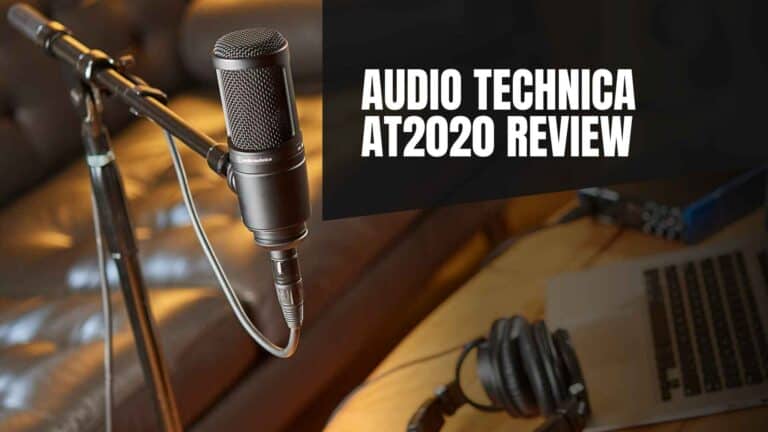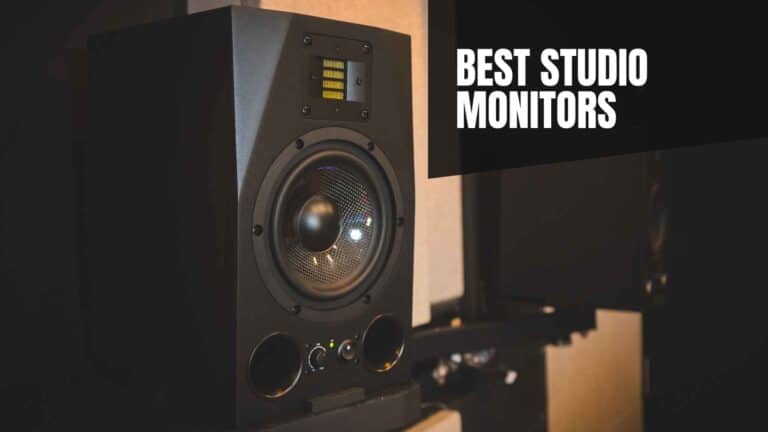Shure KSM8 Review: The Better SM58
Shure has long set the standard for microphone technology and innovation, crafting legends like the Unidyne 55 and SM58. These icons, powered by the pioneering Unidyne technology, have become the gold standard for unidirectional dynamic microphones.

In fact, the Shure Unidyne 55 and SM58 dynamic mics are so iconic that they often spring to mind when we think of microphones. They’re even represented in popular culture, like the microphone emoji on WhatsApp! The next time you’re sending one of those microphone emojis to your friends, you know you’re doing some subtle marketing for Shure! (get the pun?)
While the SM57 and SM58 mics have reigned supreme in the world of dynamic mics for years, a new contender has emerged: the Shure KSM8 Dualdyne, the “World’s First Dual-Diaphragm Handheld Dynamic Mic,” according to Shure.
Despite the longstanding success of the SM57 and SM58 mics, Shure continues to innovate. The KSM8 Dualdyne, their first entirely new dynamic microphone in nearly 50 years, is a testament to this commitment. Distinguished by its dual-diaphragm design tailored for live vocals, the KSM8 is poised to make waves.
If you’re on the hunt for an exceptional stage microphone, continue reading our Shure KSM8 review to discover why it’s being hailed as the “Better SM58.”
At a Glance
The Shure KSM8 dynamic mic is the successor to the legendary SM57 and SM58 dynamic mics. The $400 price tag might deter you, but you’d certainly change your mind if you knew just how good this mic is.
The KSM8 uses a dual-diaphragm capsule and reversed airflow to achieve unparalleled vocal clarity, making it a game-changer for live performances and studio recordings alike.
Whether you’re a professional singer, a podcaster, or an instrumentalist, the KSM8 offers precision and consistency like never before. With its expansive sweet spot and virtually no proximity effect, it’s designed for those who refuse to compromise on sound quality. If you’ve revered the SM58, prepare to be amazed by the KSM8 mic.
Pros
Cons
Unidyne Technology
To fully appreciate the groundbreaking technology of the Shure KSM8 Dualdyne, it’s essential to first look at its predecessor: the Unidyne.
Unidyne I
Historically, the prevalent method to achieve a unidirectional cardioid polar pattern in a microphone involved combining both omnidirectional and bi-directional elements within a single housing.
Their outputs were then electrically mixed in equal proportions. However, such microphones were typically bulky, and they often suffered from feedback and inconsistency, especially during a live vocal performance with a large PA system.
Shure engineer Ben Bauer sought to address these challenges. In 1937, he had an idea that would change the game. Why not design an acoustical system, the Unidyne, that simplifies everything with just a single element?

The Unidyne microphone incorporated a network of ports at its rear, allowing sound waves entering from the back to reach both the front and rear of the element’s diaphragm.
The sound waves traveling to the back of the diaphragm are slightly delayed, ensuring they reach the rear of the diaphragm simultaneously, with the sound waves diverted to the front through a longer path. As a result, the two sound waves cancel each other out, keeping the diaphragm stationary and giving us what is known as off-axis rejection.
This innovation paved the way for the Unidyne Model 55 microphone, boasting the unidirectional cardioid pickup pattern now synonymous with many contemporary moving-coil dynamic microphones.

In fact, the Unidyne 55 mic was so iconic that you might have even seen legendary artists like Elvis Presley and Frank Sinatra in photos with it.
Unidyne III
The Unidyne was not without its drawbacks – it was highly sensitive to vibrations and handling noise. This meant performers couldn’t freely move around on stage with the microphone; it had to remain stationary on its mic stand.

Ben Bauer’s protégé, Ernie Seeler, sought to address this limitation. He refined the design, introducing the Unidyne III, an end-address microphone equipped with an internal pneumatic shock mount containing a pocket of air.
When the microphone experienced vibrations from handling, the volume of this air pocket would adjust, preventing the diaphragm and coil from moving and thereby eliminating handling noise.
While the concept of the pneumatic shock mount seems straightforward, the cartridge’s design is based on several hundred pages of advanced mathematics.

The Unidyne III laid the groundwork for the legendary SM57 and SM58 microphones. Thanks to this innovative design, artists suddenly had a handheld dynamic mic they could dance with, leading to some of rock and roll’s most iconic moments.
Dualdyne Technology
You might be wondering, “How can there be further technological advancements to an already sophisticated microphone?”

While the Unidyne technology excelled at addressing feedback and handling noise, it struggled with the proximity effect and off-axis sound coloration, issues that the Dualdyne was designed to tackle.
The proximity effect refers to the amplification of bass or low-frequency response when a microphone is positioned close to the sound source. This can result in a sound that becomes muddier and boomier as you approach the mic and, conversely, sounds thin as you move away.

Developing the Dualdyne system was no small feat. It was a seven-year relentless endeavor, built entirely from scratch, incorporating new components and innovative manufacturing techniques, such as laser-welding two cartridges from the inside out for its dual-diaphragm capsule.

The Dualdyne system works by reversing the airflow of a dynamic mic and combines this with two ultra-thin diaphragms within a single element. A neodymium magnet housed inside a mold of aerospace SoftMag material resides between the dual diaphragms to maximize the magnetic field. The first diaphragm is active, while the second passive diaphragm is strategically positioned where airflow enters from the rear.
This setup allows high frequencies to pass through but partially obstructs low frequencies. The residual sound then strikes the front diaphragm and is channeled down a tube system into the pneumatic shock mount. This system allows the KSM8 mic to exhibit omnidirectional behavior at low frequencies, yet retains just the right amount of directionality to mitigate the proximity effect.
Sound Quality
Zero proximity effect and consistent off-axis response

The Dualdyne system’s controlled proximity effect ensures crystal-clear vocals, eliminating the muddy bass build-up typically experienced as you move closer to other mics.
While the microphone’s volume does increase as you approach it, it doesn’t amplify the low end as most mics do. Instead, you’re treated to a warm and smooth low end.

The Dualdyne capsule equips the Shure KSM8 handheld dynamic mic with a remarkably consistent response, whether you’re directly in front of the microphone or off to the side. A glance at its polar pattern graph reveals a consistently cardioid shape across various frequencies.
Thanks to its steady off-axis response and controlled proximity effects, the Shure KSM8 boasts a very wide sweet spot for performers. There’s no need to maintain a fixed distance or angle with the mic, offering greater freedom to move and groove on stage and a dream come true for performers who love to dance.
Furthermore, the consistent off-axis response ensures that the tone and color of your voice remain largely unchanged as you maneuver around the microphone.
Crisp and natural tone

The Shure KSM8 handheld dynamic mic maintains a tight cardioid polar pattern from low to high frequencies, which is excellent for rejecting background noises.
This is a vocal mic that also delivers a smoother all-around sound with enhanced bass details, thanks to its incredibly thin diaphragm. Yet, the mids and highs shine with clarity, offering a flat and neutral response that demands minimal EQ and audio processing.
As a live vocal mic, it stands out with its pleasing tone and detailed frequency range. There’s no hint of sibilance or harshness, ensuring a smooth sound that won’t lead to ear fatigue.
Remarkably, even though it’s a dynamic microphone, it rivals the detail of a condenser mic. And the best part is it doesn’t need phantom power like a condenser mic. However, you’ll still need a good audio interface with quiet preamps if you want a clean signal to your computer.
Great for Podcasts
Interestingly, one of the KSM8’s strengths (which, for some, might be its quirk) is that it doesn’t possess the same sensitivity and broad frequency spectrum as a typical condenser microphone.
For instance, popular condenser mics like the Audio Technica AT2020 boast a sensitivity of around 15mV/Pa and a frequency response spanning from 20Hz to 20,000Hz.

In contrast, the KSM8 dynamic microphone has a sensitivity of 2.66mV/Pa and a frequency response ranging from 40Hz to 16,000Hz. Notably, its low-end roll-off starts around 150Hz, and the higher frequencies taper off around 10,000Hz.
This characteristic makes the Shure KSM8 a great mic for podcasting and streaming, as it won’t capture low-frequency background noises such as air conditioning or fans.
Additionally, it doesn’t sound as piercing in the high-end frequencies compared to brighter microphones like the Audio Technica AT2020 and Shure SM57 mics.
However, if you prefer a more hassle-free solution for podcasting or streaming, you might want to consider a USB microphone that does not require an audio interface for connecting to your computer.
Great for Vocals and Instruments

While the KSM8 mic is primarily designed as a stage vocal mic, it stands toe-to-toe with the esteemed Shure SM57 and SM58 when it comes to recording electric guitar and drums.
Its fast transient response allows it to adeptly capture the sharp attack of a snare drum or the nuances of finger-picking. In contrast, the Shure SM57 and SM58 mics often miss out on the finer details in the bass.
The KSM8 mic also has several other advantages, such as requiring less gain and producing minimal handling noise. Additionally, the SM57 and SM58 dynamic mics might lean towards a brighter, more amplified sound in the high-end frequencies, but the KSM8 mic delivers a smoother and flatter sound that is more authentic and neutral.
The reduced prominence of the proximity effect in the KSM8 mic also means that microphone placement becomes less critical. Whether you’re setting it up for your acoustic guitar, electric guitar amp, or drums, you can expect a more consistent sound output compared to the SM57.
The Shure KSM8 mic incorporates the same internal pneumatic shock mount as the Shure SM57 and SM58 mics, but its design is further enhanced with a diaphragm stabilization system affixed to the top of the front diaphragm dome, which significantly diminishes high-frequency handling noise.
Furthermore, the interior of the grill is lined with a hydrophobic-woven cloth that reduces plosives very well, even without a pop filter, and also makes the microphone waterproof.
Who is this Mic for?

The Shure KSM8 mic is one of the best vocal microphones that is meticulously crafted to cater to the following groups of people:
Professional Vocalists: The KSM8 is a great vocal microphone for a studio or live environment with the unparalleled ability to deliver pristine vocals without the typical bass build-up, ensuring that all the nuances, from powerful crescendos to subtle intonations, are captured with utmost precision.
Podcasters and Broadcasters: The sensitive KSM8 mic has a smooth frequency response that makes it an optimal choice for those seeking clear vocal transmissions devoid of ambient disturbances. This ensures the primary focus remains on the content (you), free from background noises such as air conditioning systems or distant conversations.
Instrumentalists: Musicians, particularly those recording acoustic guitar, electric guitar, and percussion, will find the KSM8’s transient response to be exceptional. It is adept at capturing the intricate details of musical instruments, ensuring a faithful reproduction of every note played.
Stage Performers: The KSM8’s expansive sweet spot and consistent off-axis response are invaluable for performers who want to move about on stage while singing without worrying about proper mic placement. This ensures that sound quality remains consistent, irrespective of the performer’s position relative to the microphone.
In summary, the Shure KSM8 mic is tailored for individuals who prioritize audio fidelity and precision, especially during a live performance or recording in a studio where isolation is crucial, and you’re working with a Hi-Fi genre that demands accuracy.
However, for more Lo-Fi genres, such as alternative country rock or recording in a simple home studio setup, where extreme detail and clarity aren’t as essential, or if you’re a beginner looking for a new microphone to jam with your friends, the SM58 should suffice.
Production Information
Specifications
- Microphone Type: Dual-diaphragm dynamic
- Polar Pattern: Cardioid
- Frequency Response: 40 Hz to 16,000 Hz
- Sensitivity: -51.5 dBV/Pa (2.66 mV/Pa) @1kHz
- Output Connection: XLR
- Weight: 330g (0.72 lbs)
- Accessories: Zippered hard carrying case, microphone mount, 5/8” to 3/8” thread adapter
Features
- Patented dual-diaphragm cartridge for minimizing proximity effect
- Internal pumping pneumatic shock mount for reduced handling noise
- Diaphragm stabilization system for protecting the diaphragm against plosives and impact
- Integrated hydrophobic wind protection

Shure KSM8










